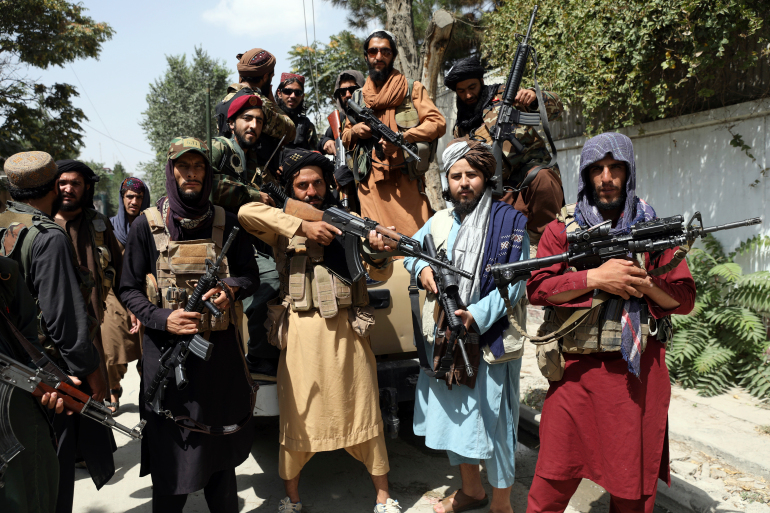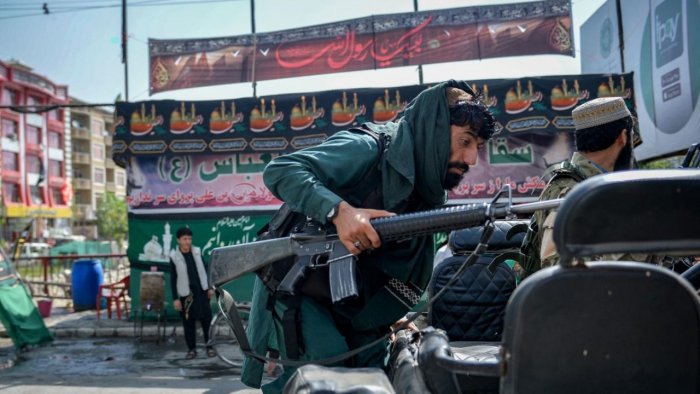The Taliban have been fighting the Afghan government and its allies for decades. Now the US is pulling its soldiers out of Afghanistan and the Taliban seem stronger than ever. Who are the Taliban really? And how is it that they have so much power?
Formed in 1994, the Taliban were made up of former Afghan resistance fighters, known collectively as mujahedeen, who fought the invading Soviet forces in the 1980s. They aimed to impose their interpretation of Islamic law on the country — and remove any foreign influence.
After the Taliban captured Kabul in 1996, the Sunni Islamist organization put in place strict rules. Women had to wear head-to-toe coverings, weren’t allowed to study or work and were forbidden from traveling alone. TV, music and non-Islamic holidays were also banned.
That changed after September 11, 2001, when 19 men hijacked four commercial planes in the US, crashing two into the World Trade Center towers, one into the Pentagon, and another, destined for Washington, into a field in Pennsylvania. More than 2,700 people were killed in the attacks.
The attack was orchestrated by al Qaeda leader Osama bin Laden, who operated from inside of Taliban-controlled Afghanistan. Less than a month after the attack, US and allied forces invaded Afghanistan, aiming to stop the Taliban from providing a safe-haven to al Qaeda — and to stop al Qaeda from using Afghanistan as a base of operations for terrorist activities.
In the two decades since they were ousted from power, the Taliban have been waging an insurgency against the allied forces and the US-backed Afghan government.
Who are the leaders?
The Taliban are led by Mawlawi Haibatullah Akhundzada, a senior religious cleric from the Taliban’s founding generation.
He was named as the Taliban’s leader in 2016 after the group’s previous leader Mullah Akhtar Mohammad Mansour was killed in a US airstrike in Pakistan.
At the time, Thomas Ruttig of the Afghanistan Analysts’ Network said the new Taliban leader might be able to “integrate the younger and more militant generation.”
Another key player is Mullah Abdul Ghani Baradar, the Taliban co-founder, who was released in 2013 after being captured in 2010 in Karachi, Pakistan’s largest city. Baradar heads the group’s political committee, and recently met with Chinese Foreign Minister Wang Yi.
What does the Taliban want?
The Taliban has said it wants to build an “open, inclusive Islamic government” in Afghanistan, as it announced victory in a 20-year battle with western-backed forces.
Taliban spokesman Mohammad Naeem stated that the group wanted a peaceful transition of power and did not intend to rule the country in isolation.
Suhail Shaheen, another Taliban spokesman, vowed there would be “no revenge” against those who worked with foreign troops and the Ghani government.
He added that Taliban fighters were forced to enter Kabul earlier than anticipated to avoid looting in the city centre following President Ghani’s exodus.
But many Afghans fear a return to extremist rule under the Taliban.
The fundamentalist group wants to restore Sharia law to Afghanistan, and has already announced plans to end mixed-gender education.
Shaheen refused to guarantee that Afghans would be allowed to flee before the Taliban took hold across the daily lives of citizens, telling the BBC: “Our policy is that no one should leave the country. We need all Afghans to stay.”
International leaders fear that Taliban assurances to the west during peace talks will soon be abandoned.
Earlier this year, the group said it wanted a “genuine Islamic system” that would make provisions for women and minority rights in line with cultural traditions and religious rules.
But earlier this month, Taliban fighters walked into the offices of Azizi Bank in the southern city of Kandahar and ordered nine women working there to leave.
The incident was seen as an early sign that major rights won by Afghan women over the past 20 years could suddenly be reversed.
Gains made in women’s rights have been touted as one of the biggest accomplishments during the US invasion of the country.
Women currently make up 56 per cent of the 11,000-strong student body at Herat University.
Others fear another civil war in the country, with heavy fighting between ethnically aligned militias.



